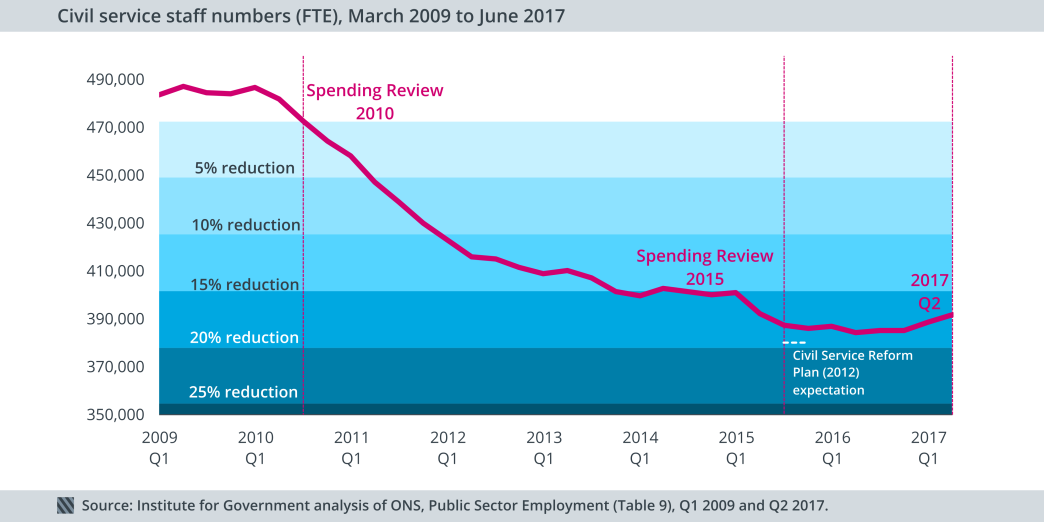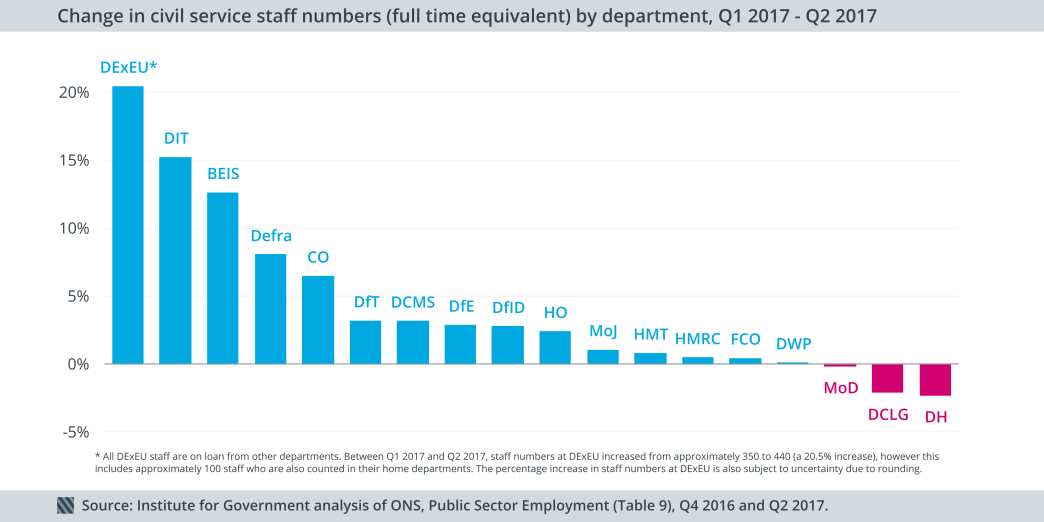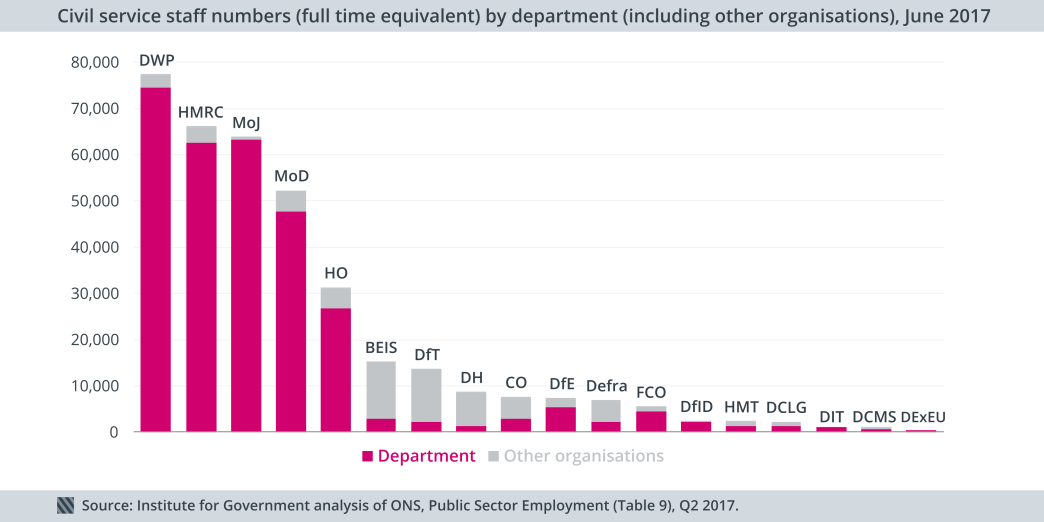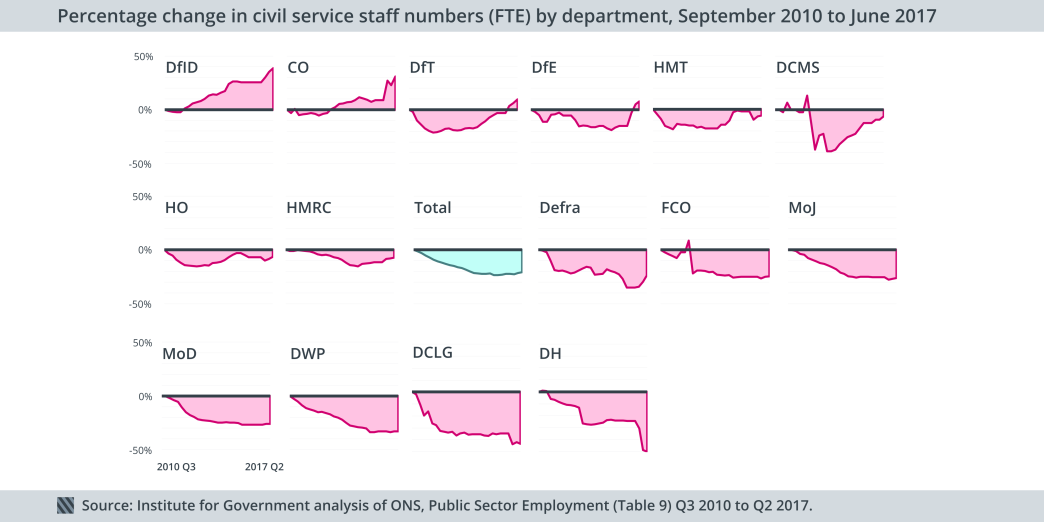The civil service workforce has increased for a fourth consecutive quarter. Aron Cheung says the demands of Brexit and growing pressures on public services are driving departments to recruit additional staff.
Civil service staff numbers have increased for a fourth consecutive quarter
The latest figures from the Office for National Statistics (ONS) published yesterday show that there are now 391,640 full-time equivalent (FTE) civil servants. In the three months leading up to the end of June, staff numbers grew by 2,950, and over the last year numbers are up 2%.

While numbers are still far below their 2010 levels, the era of deep cuts to civil service staff numbers is over. Pressure to recruit more civil servants because of the demands of Brexit and the increasing strain on public services seems to have superseded the pressure to reduce numbers caused by the government’s austerity programme.
Departments affected by Brexit have seen the biggest increases in staff numbers...

Staff numbers at the Department for Exiting the EU (DExEU) grew by 20.5% in the first three months after Article 50 was triggered. Other new departments and departments disproportionately affected by Brexit also saw their staff numbers increase:
- The Department for International Trade (DIT) - 15.2%
- The Department for Business, Energy and Industrial Strategy (BEIS) - 12.6%
- The Department for Environment, Food and Rural Affairs (Defra) - 8.1%
At the Department for Health (DH), staff numbers continued to fall after a large reduction in the first quarter of 2017, with numbers also falling at the Department for Communities and Local Government (DCLG) and Ministry of Defence (MoD).
The numbers at the Ministry of Justice (MoJ) are up, after the government announced plans last year to recruit 2,500 more prison officers by the end of 2018. However, this increase is relatively modest at 1.4%, and the department is still struggling to retain prison officers.
… but DExEU is still by far the smallest department

There are now 340 people officially working at DExEU, although these are all ‘on loan’ from other departments and the ONS notes that DExEU’s actual headcount is closer to 440, with some employee transfers having not yet been made official. This makes DExEU by far the smallest department. The next smallest departments are the Department for Digital, Culture, Media and Sport (DCMS) which has 650 employees, and DIT which has 1,210 employees.
Staff numbers have halved at the Department for Health since 2010

The latest reduction in staff numbers at DH means that since 2010, the department’s workforce has halved. Similarly, staff numbers at DCLG have fallen by 43%, and four other departments have seen cuts of 25% or more.
Only four departments – the Department for International Development (DfID), Cabinet Office (CO), Department for Transport (DfT), and Department for Education (DfE) – are larger now than they were in 2010.
While staff numbers have started to grow across several departments, the civil service is still 20% smaller than it was in 2010. Given the current pressures facing the civil service, the question is whether recent recruitment will be enough, or whether staff numbers will need to increase further.
- Supporting document
- Whitehall monitor 17.pdf (PDF, 2.17 MB)
- Topic
- Civil service